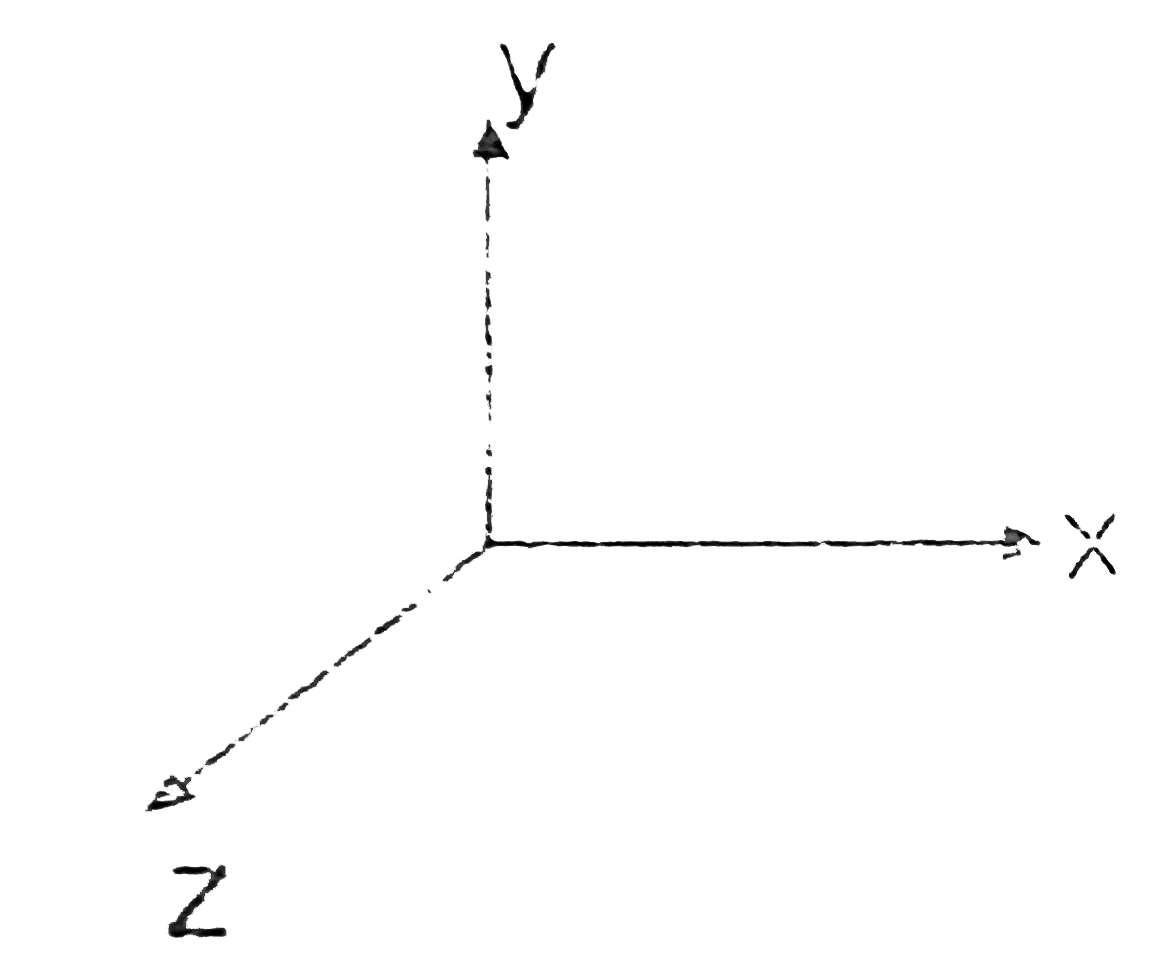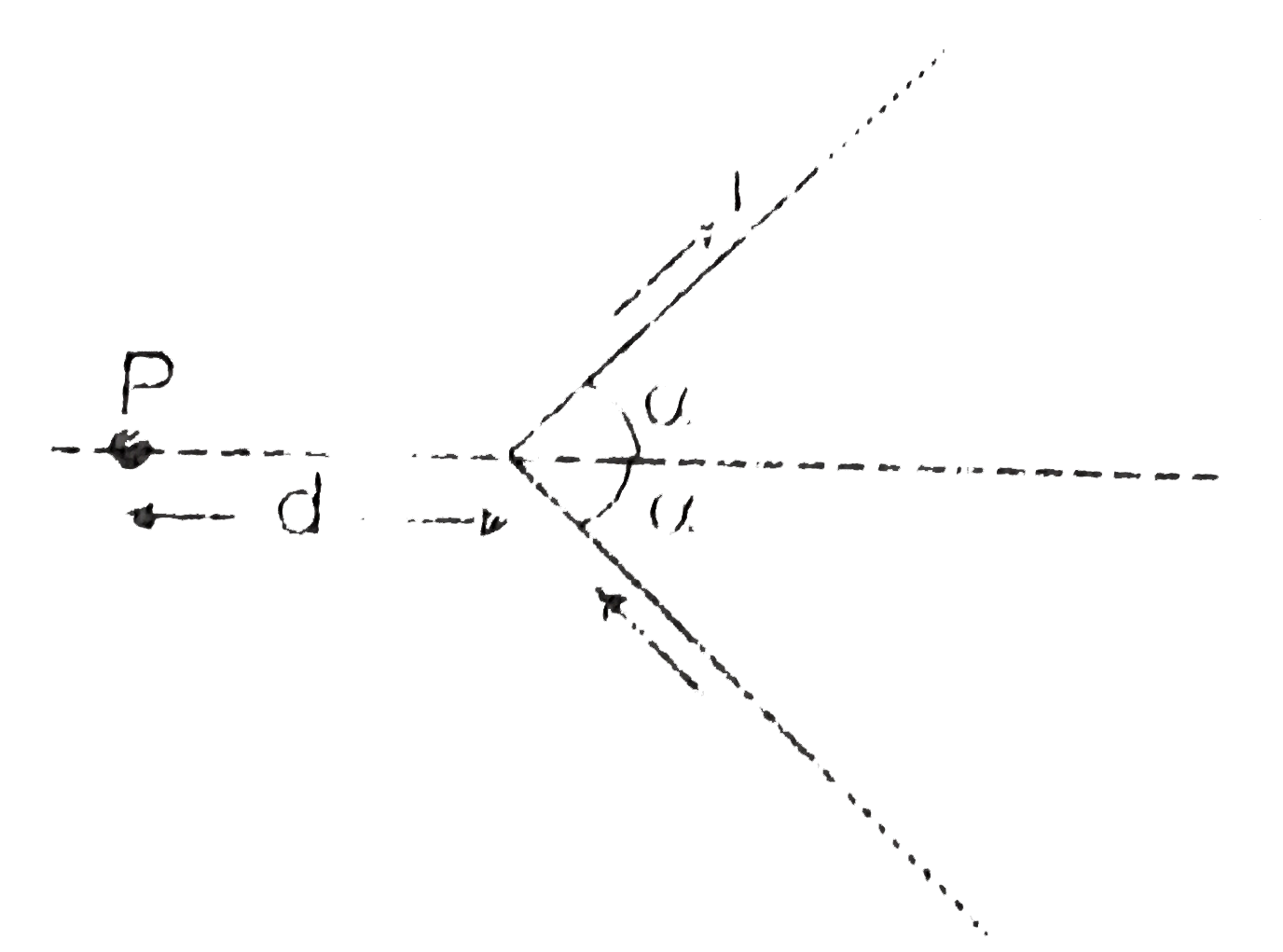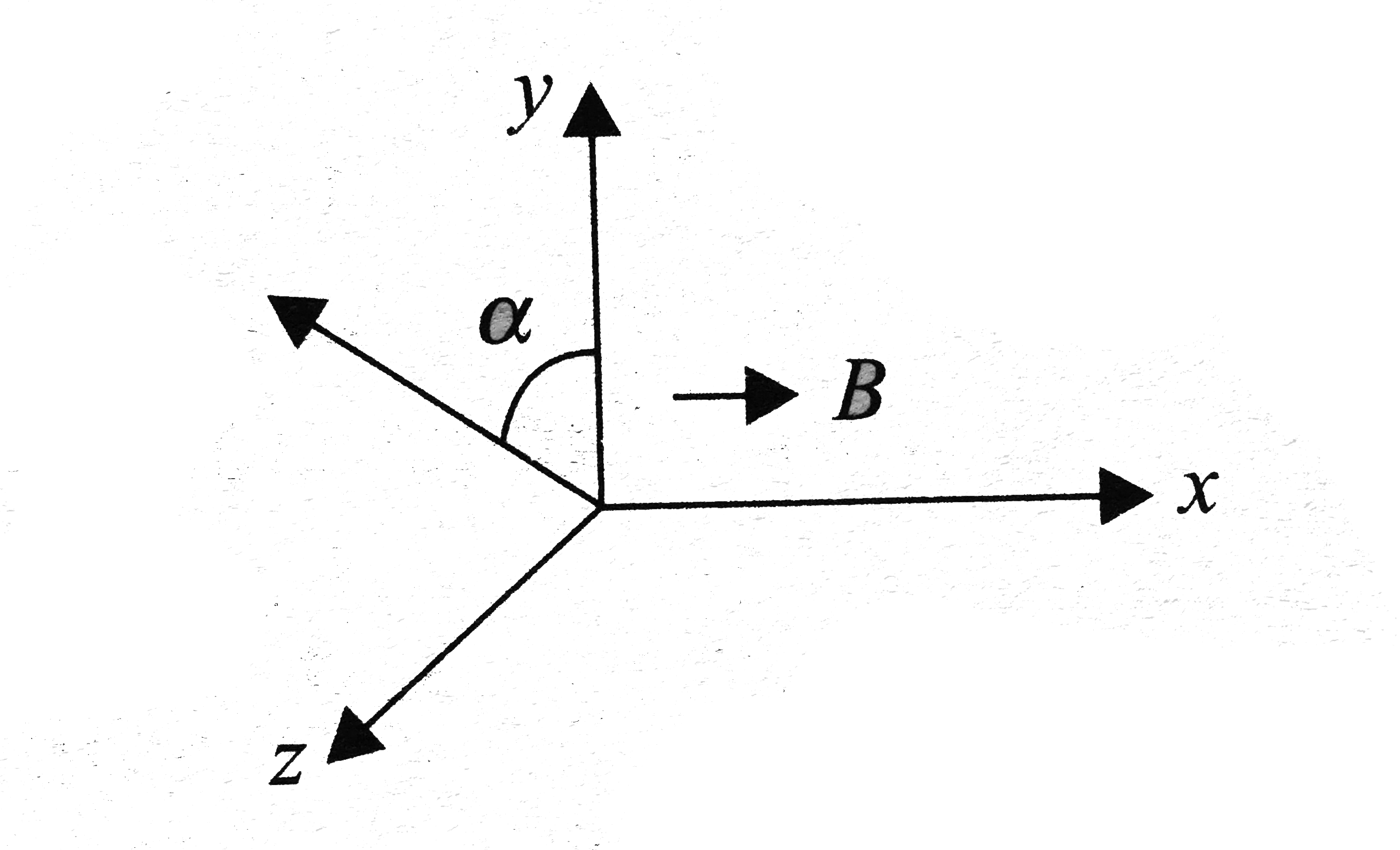A neutral atom of atomic mass number 100 which is stationary at the origin in gravity free space emits an α-particle (A) in z-direction. The product ion is P. A uniform magnetic field exists in the x-direction. Disregard the electromagnetic interaction between A and P. If the angle of rotation of A after which A and P will meet for the first time is nπ25 radians, what is the value of n?
8
6
4
1
The correct Answer is:B
A and P will have the same momentum in magnitude and they will move in opposite directions, They will move in the circle of same radius and the same centre but in opposite directions. If they meet after time t then ωAt+ωpt=2π
⇒r=2πωA+ωP=2π2eB4m+2eB(A−4)m
⇒r=4(A−4)πeBA,θA=ωAt=2eB4m×4m(A−4)πeBA
=2(A−4)πA=4825π⇒r=8nπ25=4825π⇒n=6

Topper's Solved these Questions
- MAGNETIC EFFECT OF CURRENTBOOK - MTG-WBJEECHAPTER - MAGNETIC EFFECT OF CURRENTEXERCISE - WB JEE Previous Years Questions
22 Videos
- LAWS OF MOTION BOOK - MTG-WBJEECHAPTER - LAWS OF MOTION EXERCISE - WB JEE PREVIOUS YEARS QUESTIONS (CATEGORY 3: ONE OR MORE THAN ONE OPTION CORRECT TYPE (2 MARKS))
2 Videos
- MAGNETICSBOOK - MTG-WBJEECHAPTER - MAGNETICSEXERCISE - WB JEE Previous Years Questions (Category 3: One or More than one Option)
2 Videos
Similar Questions
A neutral atom of atomic mass number I 00 which is stationary at the origin in gravity free space emits an a-particle (A) in z-direction. The product ion is P. A uniform magnetic field exists in the x-direction. Disregard the electromagnetic interaction between A and P. If the angle ofrotation of A after which A and P will meet for the first time is nπ25 radians, what is the value of n?
View SolutionDiscuss the motion of a charged particle when subjected to a uniform magnetic field, when the direction of motion of the particle makes an angle ϕ with the direction of magnetic field.
View Solution
Knowledge Check
A neutral atom which is stationary at the origin in gravity -free space emits an α- particle (A) in the z-direction. The product atom is P. A uniform magnetic field exists in the x-direction. Disregard the electrostatic forces between A and P.
AA and P will move along circular parths of equal radii.BA has greater time period of rotation than PCA has greater kinetic energy than PDA and P will meet again somewhere in the yz plane.The direction of the field B at P is

 Aalomg + x-axisBalong + z-axisCalong (-x)-axisDalong + y-axis
Aalomg + x-axisBalong + z-axisCalong (-x)-axisDalong + y-axisA charged particle begins to move from the origin in a region which has a uniform magnetic field in the x-direction and a uniform electric field in the y-direction. Its speed is v when it reaches the point (x, y, z). Then, v will depend
Aonly on xBonly on yCon both x and y, but not zDon x,y and z
23892U emits an α-particle, the product has the atomic and mass numbers as
View SolutionIn a region of space, a uniform magnetic field B exists in the x-direction. An electron is fired from the origin with its initial velocity u making an angle α with the y direction in the y-z plane. In the subsequent motion of the electron,

View SolutionA charged particle (charge q, mass m) has velocity v0 at origin in +x direction. In space there is a uniform magnetic field B in -z direction. Find the y coordinate of particle when is crosses y axis.
View SolutionIn a region of space, a uniform magnetic field B exists in the y-direction A proton is fired from the origin, with its initial velocity v making a small angle alpha with the y-direction in the yz plane. In the subsequent motion of the proton
 .
.
View SolutionThere is a uniform magnetic field and a charged particle is given an initial velocity at an acute angle to the direction of the magnetic field. What kind of path will the particle follow?
View Solution
